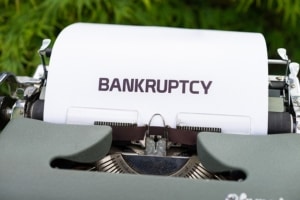California gives a lot of benefits to its inhabitants but it can also be a cause for having high costs of living that easily make people owe other people and be in debt where insolvency takes place later on and many are forced into bankruptcy. Bankruptcy is a legal proceeding that helps debtors to obtain debt relief in California so that they can repay their creditors in order to have a fresh start. A bankruptcy filing in California may be hard but when you are overwhelmed with debt and are at a loss on how to pay off your bills, filing bankruptcy may be your way out.
What Does Bankruptcy Do in California?
Declaring bankruptcy can help you to have your debts wiped out and the Bankruptcy Law makes it possible for an individual filing a bankruptcy petition to:
- Have most of your debts eliminated or discharged if they are considered as a dischargeable debt such as:
- Medical debt
- Credit card debt
- Loan debt
- Prevent foreclosure on your home and gives you the chance to keep up on your missed monthly payments.
- Prevent property repossession
- Prevent wage garnishment in California
- Prevent harassment from debt creditors and other collection agencies
- Prevent or restore your utility services
- Challenge a fraudulent collector or creditor who is charging you more than what you owed
What Bankruptcy Does Not Do in California
 Bankruptcy proceedings do not guarantee that all your financial problems are erased. A bankruptcy discharge is not given in certain types of debt and they are considered as nonexempt debts such as:
Bankruptcy proceedings do not guarantee that all your financial problems are erased. A bankruptcy discharge is not given in certain types of debt and they are considered as nonexempt debts such as:
- Child support
- Alimony
- Student loans
- Housing and rental fees
- Tax debt
- Court order of restitution and criminal fines
Bankruptcy rules also do not allow an insolvent debtor to:
- Discharge a secured debt. Secured debts are those where there is a secured creditor or he has a lien over your property. Some examples are:
o Car loans
o Mortgage payment is not automatically wiped in a bankruptcy petition along with liens on your property that are unpaid.
- Shield cosigners from debts you incurred. Even if your debts are discharged by the bankruptcy court, if you have cosigners in a contract of loan, they might still need to pay all of it
What are the Types of Bankruptcy in California?
You cannot just file bankruptcy and have your debts discharged. There are different bankruptcy forms that you need to know to see if you are qualified to declare bankruptcy. The most commonly used type of personal bankruptcy chapters are:
- Chapter 7 or liquidation bankruptcy is a fast-acting bankruptcy because, in this chapter, the personal property of the debtor will be sold off and used to pay back the lender. To qualify for this chapter, you must first undergo a means-test to see if your median income is eligible under the Bankruptcy Code in California.
- Chapter 13 or reorganization bankruptcy is the type of bankruptcy for individuals that want to keep more property unlike in chapter 7. In Chapter 13, you will have a payment plan for your debts.
How to File for Bankruptcy in California?
Filing bankruptcy does not require you to have a bankruptcy lawyer but if you choose to proceed without one, you will be liable for your actions in case you make mistakes since the bankruptcy laws are complex. If you are considering bankruptcy or already filed a bankruptcy case, having an experienced bankruptcy attorney will be very helpful because bankruptcy lawyers will guide you through the bankruptcy process. Call us now for a free legal consultation.
